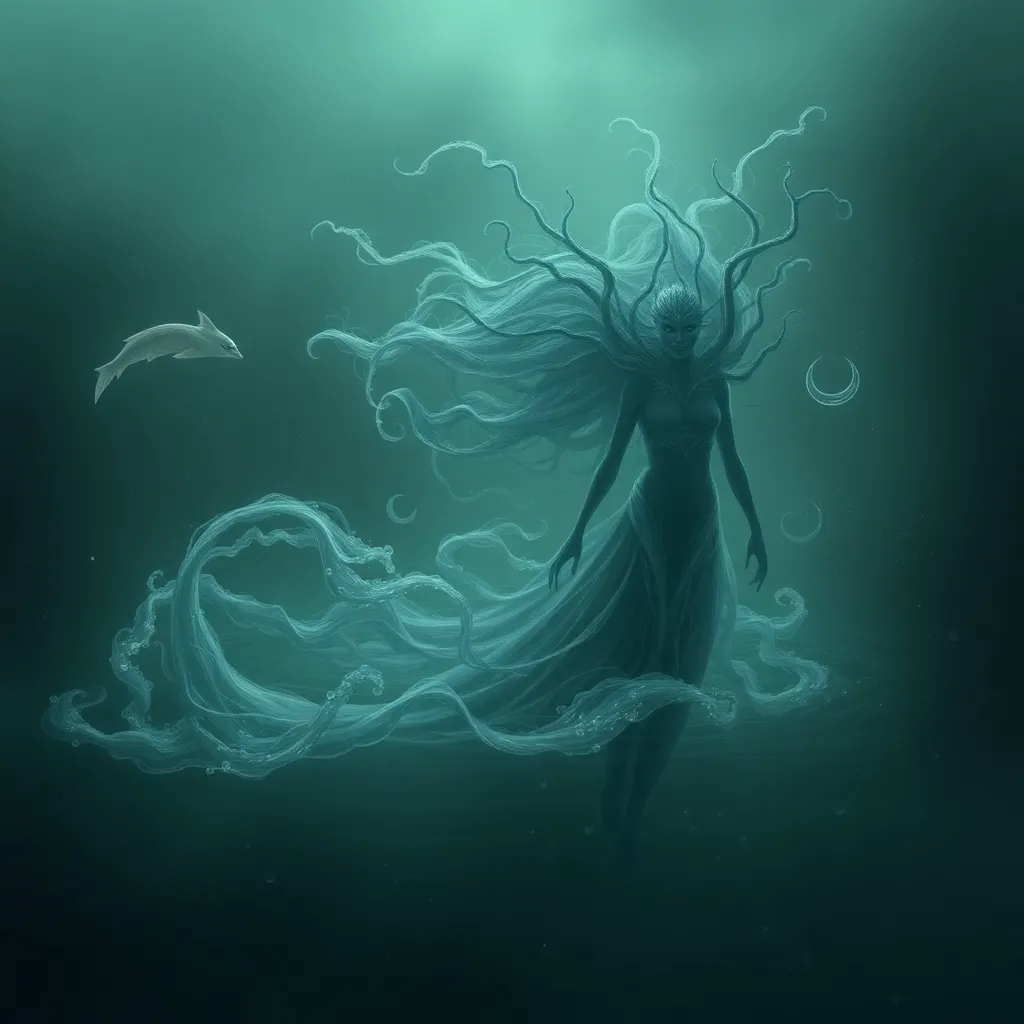Polish Rusalka Tales: Uncovering the Darker Side of Water Spirit Legends in Polish Mythology
I. Introduction
Polish mythology is rich and varied, filled with tales of gods, spirits, and legendary creatures that reflect the beliefs and values of the Slavic people. Among these, the Rusalka stands out as a captivating water spirit, often depicted as beautiful yet haunting. This article aims to delve into the darker aspects of Rusalka tales, exploring their origins, evolution, and the complex emotions they evoke.
II. Origins of the Rusalka Legend
The legend of the Rusalka has deep roots in Slavic folklore, with historical references tracing back to ancient Slavic beliefs in water spirits. Initially, Rusalki were thought to be the souls of young women who drowned, embodying both life and death. Over time, the Rusalka evolved across different cultures, adapting to various social and environmental contexts, yet retaining its core characteristics.
- Historical Background: The earliest mentions of Rusalki indicate their connection to fertility and the cycle of life, as they were often associated with rivers and lakes.
- Evolution Across Cultures: In Eastern European folklore, the Rusalka shares similarities with other water spirits like the mermaid in Western traditions, yet maintains unique attributes.
- Key Characteristics: Typically depicted as alluring maidens with long hair, Rusalki symbolize beauty, seduction, and the unpredictable nature of water.
III. The Dual Nature of Rusalka
The Rusalka embodies a duality that reflects both benevolence and malevolence. On one hand, she can be a nurturing figure, a protector of nature, while on the other, she can be a vengeful spirit, luring men to their doom.
Comparing Rusalki to similar water spirits in other cultures, we find intriguing parallels:
- Mermaids: Often depicted as enchanting beings, mermaids also possess a dangerous allure that can lead sailors to disaster.
- Naiads: In Greek mythology, naiads are water nymphs associated with springs and rivers, sharing similarities with the nurturing aspect of the Rusalka.
Thus, the Rusalka serves as a complex symbol of beauty intertwined with danger, reflecting the multifaceted nature of femininity.
IV. Common Themes in Rusalka Tales
Rusalka stories often feature recurring motifs that highlight human experiences and emotions:
- Seduction: The Rusalka’s allure often leads to tragic outcomes, illustrating the peril of temptation.
- Loss: Many tales involve themes of unfulfilled love and longing, as Rusalki mourn their lost lives.
- Revenge: A common narrative involves the Rusalka seeking vengeance on those who wronged her, showcasing the darker side of her spirit.
Nature and water play pivotal roles in shaping the Rusalka’s narrative, acting as both a setting and a character that reflects her emotional state. The fluidity of water symbolizes the unpredictability of life, echoing the tumultuous emotions experienced by the Rusalka.
V. Rusalka in Polish Literature and Art
The Rusalka has inspired numerous literary and artistic works throughout Polish history. Notable literary contributions include:
- Adam Mickiewicz: In his works, Mickiewicz explores the themes of love, loss, and the supernatural, often incorporating the Rusalka into his narratives.
- Romanticism and Folklore: The Romantic movement in Poland saw a resurgence of interest in folklore, with the Rusalka symbolizing the connection between humanity and nature.
In visual arts, the Rusalka is depicted in various forms, often emphasizing her ethereal beauty and tragic fate. This representation serves to deepen the understanding of her character and the themes surrounding her.
VI. The Rusalka’s Connection to Feminine Archetypes
The Rusalka serves as a powerful representation of feminine archetypes, embodying both strength and vulnerability. Her stories often reflect the intersection of femininity and tragedy, highlighting the cultural implications of her choices and sacrifices.
- Feminine Power: The Rusalka possesses an enchanting allure that grants her power over men and nature, yet her power is often accompanied by isolation.
- Vulnerability: As a spirit tied to loss and longing, the Rusalka represents the fragility of human emotions and the tragic consequences of unfulfilled desires.
This duality invites reflection on the societal expectations placed on women and the complexities of their roles within folklore.
VII. Modern Adaptations and Interpretations
In contemporary culture, Rusalka stories have been reimagined in various forms of media, including film, theater, and literature. These modern adaptations often reflect current societal issues and perspectives:
- Film: Recent films have portrayed the Rusalka as a complex character, exploring themes of identity, autonomy, and the struggle against societal norms.
- Theater: Stage adaptations often emphasize the emotional depth of Rusalka’s character, bringing her tragic story to life in new ways.
- Literature: Contemporary authors revisit the Rusalka myth, infusing it with modern sensibilities and reflecting on themes of empowerment and resilience.
This resurgence of interest in folklore indicates a broader cultural movement toward reclaiming and reinterpreting traditional narratives.
VIII. Conclusion
In summary, the Rusalka tales offer a fascinating glimpse into the darker side of Polish mythology, revealing complex themes of beauty, danger, and human emotion. Understanding these narratives enhances our appreciation of the cultural significance of water spirit legends in Polish folklore. The enduring legacy of the Rusalka serves as a reminder of the power of myth to reflect and shape societal values, inviting us to explore the depths of our own stories.



